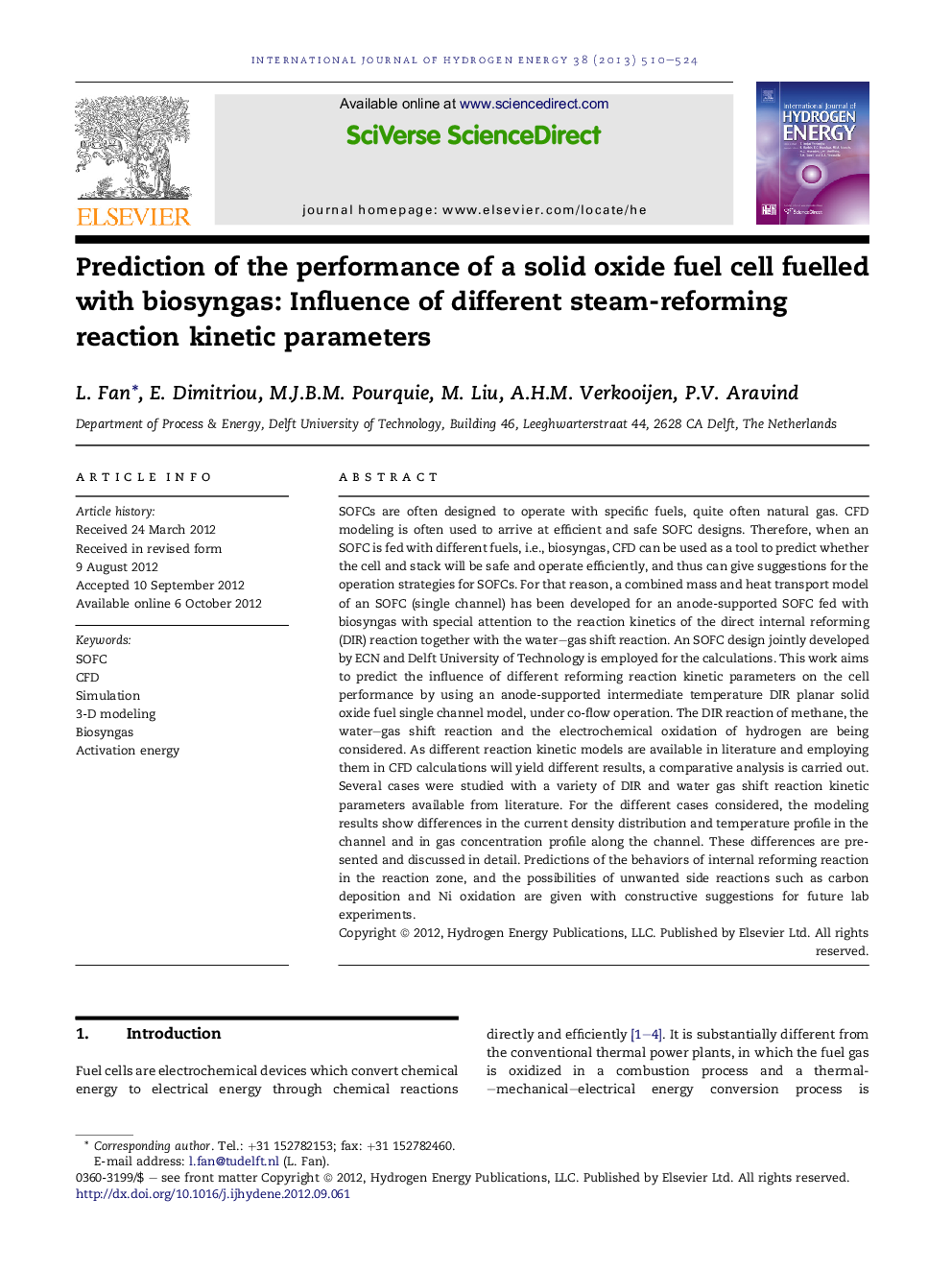| Article ID | Journal | Published Year | Pages | File Type |
|---|---|---|---|---|
| 1274399 | International Journal of Hydrogen Energy | 2013 | 15 Pages |
SOFCs are often designed to operate with specific fuels, quite often natural gas. CFD modeling is often used to arrive at efficient and safe SOFC designs. Therefore, when an SOFC is fed with different fuels, i.e., biosyngas, CFD can be used as a tool to predict whether the cell and stack will be safe and operate efficiently, and thus can give suggestions for the operation strategies for SOFCs. For that reason, a combined mass and heat transport model of an SOFC (single channel) has been developed for an anode-supported SOFC fed with biosyngas with special attention to the reaction kinetics of the direct internal reforming (DIR) reaction together with the water–gas shift reaction. An SOFC design jointly developed by ECN and Delft University of Technology is employed for the calculations. This work aims to predict the influence of different reforming reaction kinetic parameters on the cell performance by using an anode-supported intermediate temperature DIR planar solid oxide fuel single channel model, under co-flow operation. The DIR reaction of methane, the water–gas shift reaction and the electrochemical oxidation of hydrogen are being considered. As different reaction kinetic models are available in literature and employing them in CFD calculations will yield different results, a comparative analysis is carried out. Several cases were studied with a variety of DIR and water gas shift reaction kinetic parameters available from literature. For the different cases considered, the modeling results show differences in the current density distribution and temperature profile in the channel and in gas concentration profile along the channel. These differences are presented and discussed in detail. Predictions of the behaviors of internal reforming reaction in the reaction zone, and the possibilities of unwanted side reactions such as carbon deposition and Ni oxidation are given with constructive suggestions for future lab experiments.
► Influence of steam reforming kinetics on SOFC performance is numerically evaluated. ► Carbon deposition at the SOFC anode is not thermodynamically favored. ► Ni oxidation not thermodynamically favored under practical conditions considered. ► Lower steam reforming activation energy is beneficial for higher current density. ► Higher steam reforming activation energy reduces the thermal stress.
